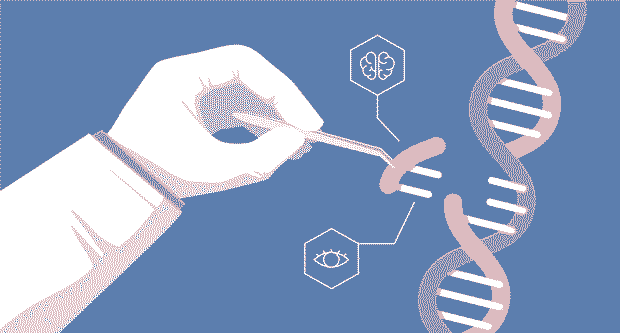Question: What is CRISPR? What are its implications and future possibilities in genetic editing?
CRISPR (Clustered Regularly Interspaced Short Palindromic Repeats) is a groundbreaking technology that has revolutionized the field of genetic editing. With its precise and efficient approach to altering DNA, CRISPR holds immense potential for advancements in medicine, agriculture, and beyond. However, the power to edit genes also brings forth significant ethical considerations. This article explores the technology behind CRISPR, its applications, and the ethical implications of its use, as well as the future possibilities it presents.
Understanding CRISPR Technology
CRISPR technology was adapted from a natural defense mechanism found in bacteria. These microorganisms use CRISPR sequences to remember and defend against viral invaders by cutting the DNA of the attacking virus. Scientists have harnessed this mechanism to create a tool that can precisely target and edit specific sequences of DNA in various organisms, including humans.
The CRISPR-Cas9 system, the most widely used form of CRISPR, involves two key components:
- Guide RNA (gRNA): A short RNA sequence that binds to the target DNA sequence.
- Cas9 Enzyme: A protein that acts as molecular scissors, cutting the DNA at the precise location specified by the guide RNA.
Once the DNA is cut, the cell’s natural repair mechanisms kick in. Scientists can manipulate these repair processes to add, delete, or modify specific genetic sequences, effectively editing the genome.
Applications of CRISPR
The versatility and precision of CRISPR have opened up a plethora of applications across various fields:
Medicine
- Gene Therapy: CRISPR holds promise for treating genetic disorders by correcting mutations at the DNA level. For example, researchers are exploring CRISPR-based treatments for conditions like cystic fibrosis, sickle cell anemia, and muscular dystrophy.
- Cancer Research: CRISPR can be used to study cancer genetics, identify potential drug targets, and develop personalized cancer therapies. By editing cancer cells, scientists can better understand how genetic mutations drive tumor growth and resistance to treatment.
- Infectious Diseases: CRISPR has potential applications in combating infectious diseases. For instance, it can be used to target and deactivate viral DNA in infected cells, offering new strategies for treating viral infections like HIV and hepatitis.
Agriculture
- Crop Improvement: CRISPR can be used to enhance crop traits such as yield, nutritional content, and resistance to pests and diseases. This has significant implications for food security and sustainable agriculture.
- Livestock: Genetic editing can improve livestock health and productivity. CRISPR can be used to breed animals with desirable traits, such as disease resistance or improved growth rates, reducing the need for antibiotics and other interventions.
Environmental Conservation
- Gene Drives: CRISPR-based gene drives can be used to control invasive species, such as mosquitoes that transmit malaria. By spreading genetic modifications through populations, gene drives can reduce the prevalence of disease-carrying species and protect endangered ecosystems.
- De-extinction: Some researchers are exploring the use of CRISPR to bring back extinct species by editing the genomes of closely related living species. This concept, known as de-extinction, raises both exciting possibilities and ethical concerns.
Ethical Implications of CRISPR
The power of CRISPR to edit the genetic code of living organisms brings forth a host of ethical considerations:
Human Germline Editing
One of the most contentious ethical issues is the potential for CRISPR to edit human germline cells (sperm, eggs, or embryos). Germline edits are heritable, meaning they can be passed on to future generations. This raises several ethical concerns:
- Unintended Consequences: Editing the human germline carries the risk of unintended off-target effects or unforeseen consequences that could affect future generations.
- Informed Consent: Future generations cannot consent to genetic modifications made to their DNA, raising questions about the ethics of making irreversible changes to the human gene pool.
- Social Inequality: Access to genetic editing technologies could exacerbate social inequalities if only wealthy individuals can afford to enhance their offspring’s genetic traits. This could lead to a new form of genetic inequality.
Animal Welfare
The use of CRISPR in animals, particularly for agricultural purposes, raises ethical questions about animal welfare. Editing the genomes of livestock to enhance desirable traits might lead to unintended health issues or welfare concerns. It is crucial to consider the well-being of animals and ensure that genetic modifications do not compromise their quality of life.
Environmental Impact
The release of genetically edited organisms into the environment, such as gene drives to control invasive species, carries ecological risks. Unintended ecological consequences could disrupt ecosystems and biodiversity. It is essential to conduct thorough risk assessments and implement safeguards to minimize potential environmental impacts.
Moral and Religious Concerns
Different cultures and religions have varying perspectives on genetic editing. Some may view genetic modifications, particularly germline editing, as ethically problematic or contrary to religious beliefs. It is important to engage in open and inclusive dialogues to consider diverse viewpoints and respect cultural and religious values.
Future Possibilities
Despite the ethical challenges, the future possibilities of CRISPR are vast and transformative:
Personalized Medicine
CRISPR could revolutionize personalized medicine by enabling precise genetic modifications tailored to individual patients. This could lead to highly effective treatments for genetic disorders, cancers, and other diseases. Personalized gene therapies could offer hope to patients with previously untreatable conditions.
Agricultural Sustainability
CRISPR could play a key role in developing sustainable agricultural practices. By creating crops that are more resistant to pests, diseases, and environmental stresses, CRISPR could help ensure food security in the face of climate change and growing global populations. Improved livestock genetics could also contribute to more efficient and sustainable animal farming practices.
Environmental Restoration
CRISPR-based technologies could aid in environmental restoration efforts. Gene drives and other genetic editing tools could help control invasive species, protect endangered species, and restore damaged ecosystems. This could have significant positive impacts on biodiversity and ecosystem health.
Bioethical Frameworks
As CRISPR technology advances, it is crucial to develop robust bioethical frameworks to guide its use. International collaboration and consensus-building will be essential to establish ethical guidelines, regulatory standards, and oversight mechanisms. This will help ensure that CRISPR is used responsibly and ethically, minimizing potential risks and maximizing benefits.
Conclusion
CRISPR and genetic editing represent a monumental leap in scientific and technological capabilities, offering unprecedented opportunities to transform medicine, agriculture, and environmental conservation. However, with great power comes great responsibility. The ethical implications of CRISPR are complex and multifaceted, requiring careful consideration and thoughtful regulation.
By understanding the technology, its applications, and the ethical considerations, we can navigate the future possibilities of CRISPR with a balanced approach. Embracing the potential of genetic editing while addressing ethical concerns will be key to harnessing the full benefits of CRISPR and ensuring a brighter, healthier, and more equitable future for all.



